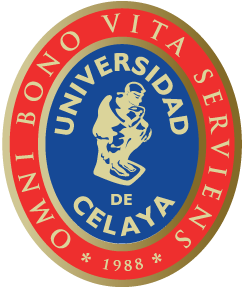By: Bryan Delgado and Abraham Herrera
Last Thursday, May 13, 2021, we received at the University of Celaya during our activity "Science Dialogues" Dr. Rocio Boza Calvo from the Faculty of Education of the Universidad Hispanoamericana de Costa Rica, who shared with us the development and results of her analysis of the effectiveness of the implementation of the simulation strategy in education according to the perception of the facilitators involved in the process, from the second quarter of 2016 to date.
Would you like to know the most important details of this research? We present them to you!
The objective of this research is to demonstrate the effectiveness of simulation as a methodological strategy used in different courses of the curriculum of the Faculty of Education of the Universidad Hispanoamericana. This simulation strategy consists in that each professor in his course chooses thematic contents that have been addressed in the classroom and plans with the accompaniment of professional actors a scenario or also called profile that is as close as possible to the educational reality in classroom or educational center contexts, with the objective that the student faces these situations and puts into practice the theoretical knowledge acquired in the courses.
Fields of application of simulation
Simulation is a didactic strategy that allows an approach to professional reality.
Traditionally it has been used for:
- Training and education
- Communication and sales
- System design or improvements.
- Systems management
In disciplines such as:
- Engineering
- Medicine, biology, ecology.
- Social and economic sciences
Research process
In 2016, a qualitative study was conducted in the second half of the semester of the same year, at the Universidad Hispanoamericana. University that has formalized simulation in education and that has been applied in six courses of the curriculum of the different careers of the Faculty of Education, among which are:
- Learning disabilities
- Language disorders 1
- Group techniques
- Evaluation techniques in English and Spanish
- General Didactics 1
- Teaching English 3
Each of the courses where simulation is carried out as a teaching methodology contemplates in its program that the student's participation and performance in such activity has a value of 20% of the final passing grade of the subject.
Throughout the term, starting in week 7 according to their schedule, two simulations must be carried out. They have 18 trained teachers who have become facilitators to implement it.
In order to know the effectiveness of the methodology we were working with, a qualitative research was carried out by sending a questionnaire to each of the professors who implemented this methodology throughout the course they taught. It should be noted that one of them left the institution, another is no longer part of the faculty of education, another is the simulation coordinator and preferred to avoid bias and the remaining 4 did not send the survey in the time in which they were requested.
Eleven questionnaires were collected and served as a sample for the qualitative analysis.
Main results
The teachers who responded to the questionnaire report that by using simulation, students develop critical thinking, in situations that actually allow them to test what they know, what they can do and how they think it should be done. Many simulations develop decision-making skills, a very important aspect of thinking and problem solving.
All the interviewees mentioned as positive aspects the ambience of the space, the professionalism of the actors, and the technology used (Learning Space). These positive aspects are the product of a joint effort and work.
The most outstanding issue in terms of aspects to be improved is the sound and the transfer of venues to carry out the simulation. It should be noted that the respondents seemed to answer focusing on recent events and did not answer evidencing everything that occurred throughout the strategy implementation process.
Conclusions and recommendations
It is important to make it clear that although simulation allows the future teacher to get closer to reality. It will not always be able to represent or reproduce in its entirety situations that are generated within the educational centers, hence the component of using professional actors is perhaps the option that most reduces this disadvantage that several researchers have pointed out.
Professional actors are hired for the simulations considering that they have dramaturgical training and a trained capacity for reproduction that facilitates performance in an educational activity, focused on learning objectives and at the service of students in professional training.
An important factor provided by the adequate preparation of actors is the increase in the level of realism of the simulation scenarios.
Another very important factor is that the teachers attending the education courses must be active teachers with work experience so that the scenarios or profiles are as real as possible and in line with the current context.
